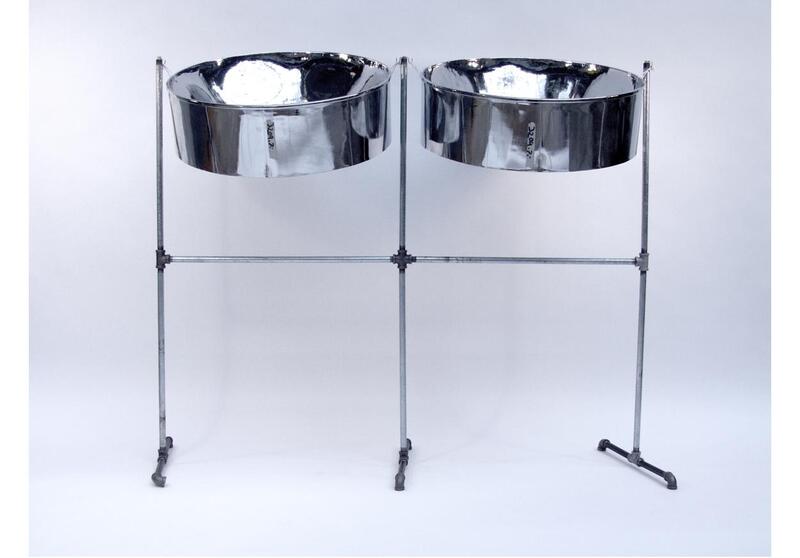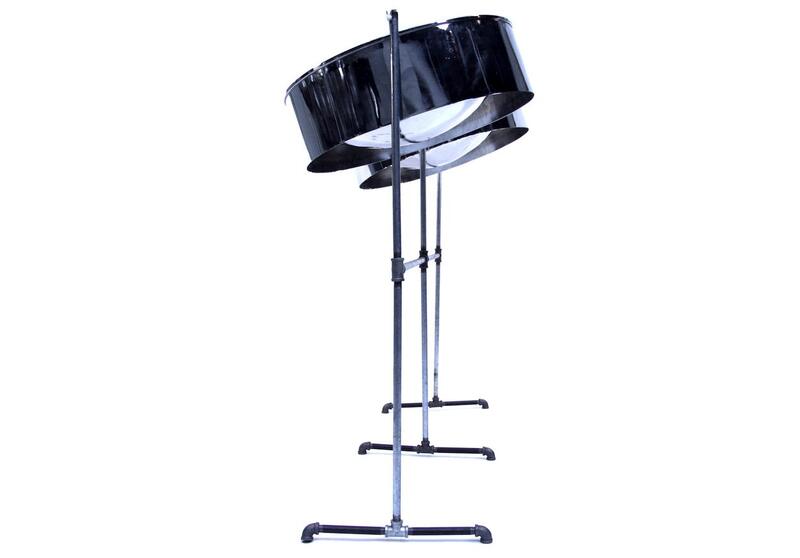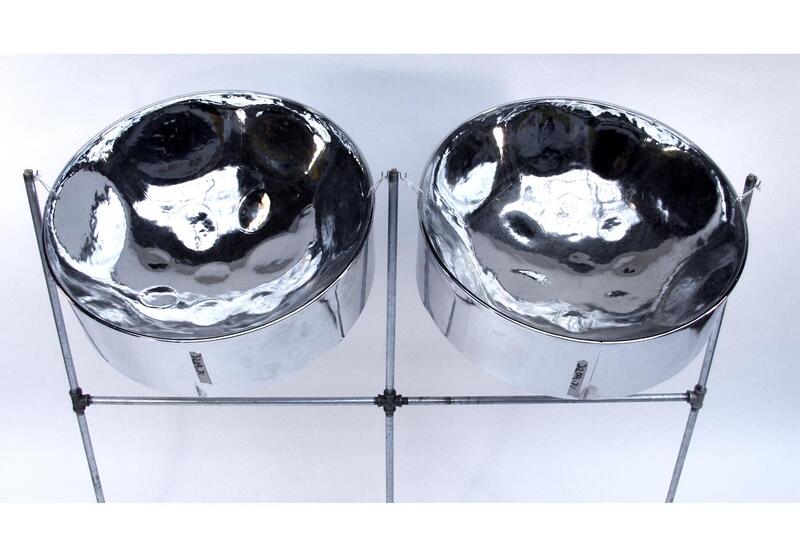Double Second Pan
Title
Video
Physical description
This instrument consists of two drums with a “skirt” or side length of approx. 15-18cm (Blake, 111). The notes are “raised” from the concave bowls of each drum, and produce a slightly lower voice (than the double tenor) due to the longer skirt. The lowest notes found along the circumference of the bowl are U-shaped, while the higher octave notes are either oval or circular-shaped inside. The double second pans must be suspended on stands or a rack to allow the drums to resonate and are played with moderately thick rubber mallets.
Historical background
The double second was designed by Ellie Mannette of the Invaders Steelband. It has the dual use of supporting the melody as well as playing upper portions of the harmony in a standardized accompaniment rhythm. Along with the quadrophonics, its rhythm historically derived from the cuatro, a four-string guitar used in parang (a Venezuelan-influenced musical genre performed at Christmas) (Steumpfle, 43).
Tuning
The double second has a chromatic range between F3 and C#6, with 30 notes. Pan tuner Ellie Mannette’s original design for the double second, known as “Invaders styling” has become the standard for this instrument (Blake, 111). The arrangement of notes allows for easy formation of chordal patterns.
Geography
Classification
Ensemble
Materials
Date/Era
Bibliography
Blake, F.I.R. The Trinidad & Tobago Steel Pan: History and Evolution. Port of Spain, Trinidad: Published by author.
Goddard, George “Sonny.” 1991. Forty Years in the Steelbands, 1939-1979. Port of Spain, Karia Press.
Steumpfle, Stephen. 1995. The Steelband Movement: The Forging of a National Art in Trinidad and Tobago. Philadelphia: Univ. of Pennsylvania Press.
Thomas, Jeffrey Todd. 1985. A History of Pan and the Evolution of the Steel Band in Trinidad and Tobago. M.A. Thesis. Middletown, CT: Wesleyan University.
Additional resources
Pan Trinbago
http://www.pantrinbago.co.tt


